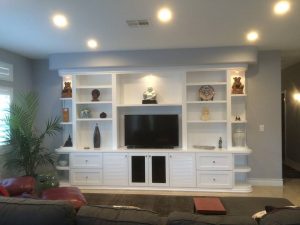
The best way to illustrate the problems and pitfalls involved with getting multiple bids is by sharing a simple story. In the interest of full disclosure, I’m a general contractor, a remodeling contractor that specializes in kitchens and baths but also does whole house remodels, additions, casitas and commercial tenant improvements. Having 20 years of experience under my belt would generally make it easier for me to analyze bids and I would think much more so than the average consumer or remodeling client.
For starters, where does the psychology of multiple bids come from? It’s suggested by practically everyone and I think mostly to give you the reassurance that you picked a good bid. You didn’t take the lowest or the highest and that saved you money and made you feel like you made a good decision. One of the issues is what is driving the distance between the prices? How much detail do you get with the estimate and there’s a host of other things that should weigh in on your decision but I’ll get to those later. Here’s my story which in many ways you will see applies directly to you.
I was working on a project involving 44 studio apartments and had to review all the bids for the work and decide which bids were the winners. Some of this may get technical but hang with me till the end and you’ll see what I mean.
Cabinetry bids: One bid specifies 11 cabinets and quotes a price with no info on construction details about the cabinets and it comes in at $1,400. The next bid comes in at $2,400 and specifies the same cabinets but also says the boxes are ½” plywood and full 3/4 size drawers. The 3rd bid comes in at $2,700 and actually lists all the boxes and descriptions per box. I need to make a determination so I know the product from the 3rd cabinet company is an RTA (ready to assemble) cabinet that I have used in multiple kitchens. I know they have soft close doors and drawers, I know the drawers are all dove tail joined and it’s a quality product. At this point I standardize the bid specifications and in the process I realize that Company 1 never gets back to me but I learn from the client that this company staples the drawers together and uses a laminate over pressboard. The 2nd company staples their drawers and the plywood box is ½” not a full ¾” maple like company 3. The answer at this point is pretty obvious.
Plumbing bids: I walk into the unit and ask “What’s up with the galvanized vent pipe and black iron?” This pipe is over 50 years old and it’s not in good condition. My client walked the first plumber through and told him to relocate the kitchen sink, the toilet and the bathroom sink. I have a bid made out in pencil on an invoice form. That plumber told him he didn’t need a plumbing isometric (supply and drain diagrams of the building). The owner gets annoyed when I tell him the bid is garbage so I standardize the bid so there is now a set scope of work. The 2nd plumber, who I know, comes in at $2,400 per unit and includes replacing the old pipe. The first plumber re-submits a new bid, again in pencil but this time on yellow legal pad and it’s now $2,700 + $3,000 in extras. The client is enraged that his first plumber more than tripled his bid. I explain to the owner that many people have a business model that involves giving you the lowest price on the planet and then cleaning you out with change orders and that by standardizing the scope of work you are now finally looking at apples to apples.
The point here is that my experience in this arena tells me immediately what the real story is. When we look at these two examples you will find some common threads. What is the difference between a low bid and a high bid? It’s one of the following. Different materials are being quoted. Different construction methods are being quoted. Some of these cabinets are factory assembled and done cheaply. Others are assembled by hand. When my company assembles them, they are rock solid. Sometimes when others assemble, not so much. I’ve seen cabinets not glued correctly, not nailed or screwed and ready to fall apart at a moment’s notice. So we have the difference in products quoted, construction and building methods, skill level, expertise at their craft, pride in workmanship, attention to detail, concern for a long term relationship with the customer that leads to more business and good will down the road. Our multiple bid process usually lead us to choose the “safe” middle bid but very little in the process leads us to the really important items mentioned in the last paragraph. How did the bid get lower? Lower quality, lower skill, bad estimating by someone who threw their hat in the ring because they needed the money your job would pay them? Somewhere the cost has to be cut to reflect a lower price and this is usually the ground where change orders grow. I prefer not to have allowances, I want actual cost. I want a well written scope of work that directs all the work to conclusion and I spend more time on learning what the customer wants so that every time they walk into the room I just remodeled, they smile
